Barbara Coles
Back to the Land
They were a privileged generation, growing up in the prosperous 1950s. But many of them would reject that lifestyle for one they believed was more meaningful and kinder to the Earth
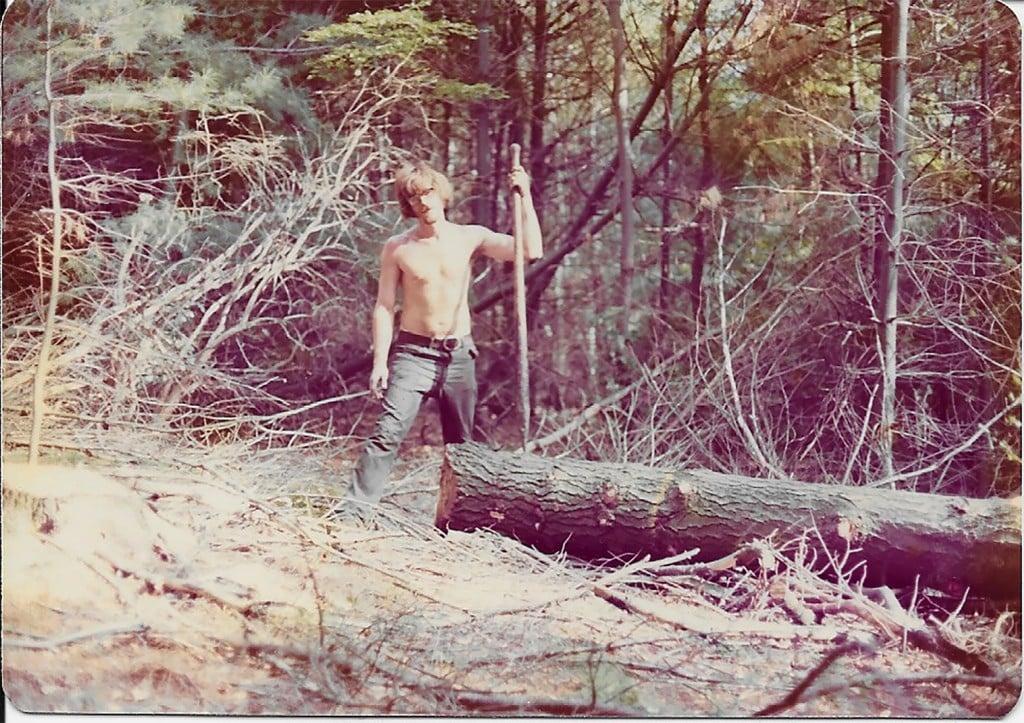
It was a time much like this time. The country seemed in shambles. Deep societal divisions, the unwinnable Vietnam War, a grueling civil rights struggle, shocking assassinations, rivers on fire, skies dark with smog, rampant consumerism — as the late ’60s spilled into the ’70s, it all came together to create a sudden and significant shift in the national psyche, away from the consumer culture, away from the strife, toward more simple living, toward more care for each other, toward more care for the Earth.
One way that manifested: a “Back to the Land” migration. Weary, disillusioned, searching for a new way to live, young people in startling numbers — as many as a million, by one count — packed their bags, nearly en masse, and headed for the rural countryside. New Hampshire was a major destination.
It wasn’t a movement that you joined. It was in the air, part of the collective consciousness,” Jean Stimmell says. “We just went with the flow.”
For Jean, now 75, it began when he was in graduate school. Like many college-educated, middle-class young people of the time, he decided he didn’t want to lead the life that his parents had led. “It wasn’t a matter of going back to the land like it was some kind of holy grail,” he says. “We wanted to live a sustainable and authentic lifestyle — creating it, wherever possible, with our own hands.”
Handy Reference
Called the counterculture bible, the Whole Earth Catalog was used by homesteaders of the late ’60s and ’70s in much the same way Google is used today. It had articles and how-to diagrams, but mostly it was a product catalog that could be searched for reviews of tools, clothing, seeds, books and other elements of back-to-the-land life.
What inspired him — and almost all of the back-to-the-landers of that day — was a book called “Living the Good Life: How to Live Sanely and Simply in a Troubled World.” Written by Helen and Scott Nearing, it described their move from a professional life in New York City to rural Vermont, where they created a homestead, building their house from stones and growing their own food. When Jean read it, he realized he was the “perfect recruit.”
He dropped out of graduate school — “sick of ingesting abstract theories in my cubicle and chafing at a department that valued statistics more than people,” he says. With money he made as a dry-laid stone mason — what he calls a “bread job” — and 21 acres of land in Northwood he used as collateral for a $14,000 construction loan, he and a friend built a house in “the here and now reality of the real, physical world.”
That new reality by then included his wife Judy. They moved into the house on those 21 acres in mid-winter with “bare plywood floors, pink insulation on the walls and a culvert for a chimney.” They grew big gardens, and had pigs, chickens, ducks and geese. The land was soon certified as a tree farm and Jean hauled the trees on a scoot pulled by two of his neighbor’s oxen.
All of the things that homesteaders did required knowledge that most, including Jean and Judy, didn’t have.
For them, and many returning to the land, “old hillside Yankee farmers” provided much of what they needed. Jean says, “While they were all initially distrustful of our long hair and hippie way of life, they soon learned that we shared in common a fundamental ethic that was much more important: Living a self-sufficient lifestyle, attuned to the rhythms of nature and the land. They were often our major mentors and teachers in a path, as I like to say, back to the future.”
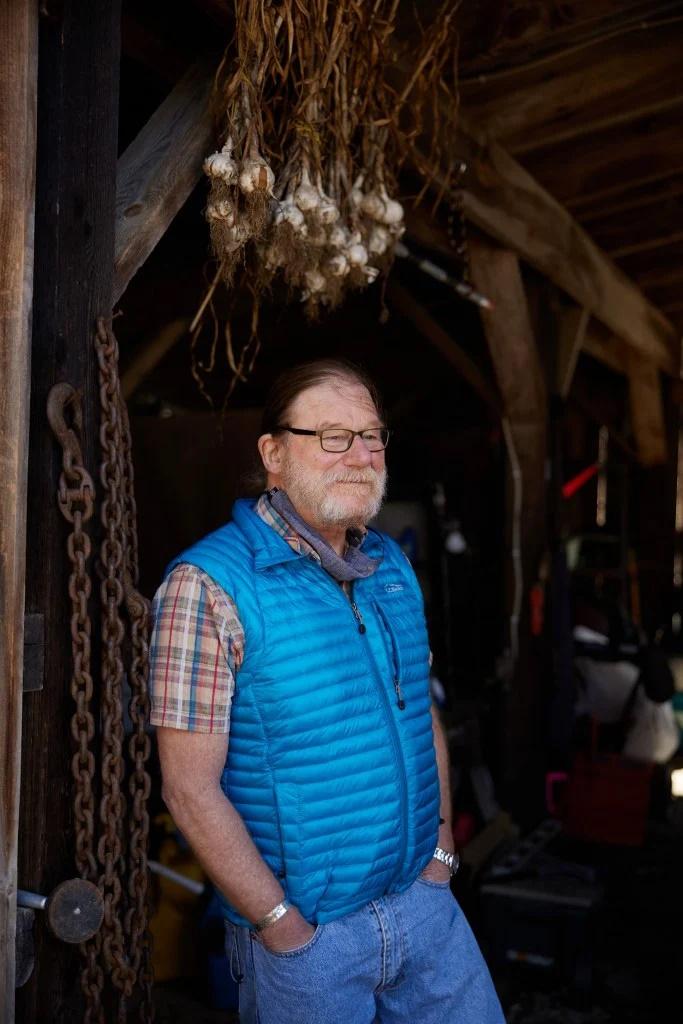
The couple was also helped in their homesteading by the counterculture bible, the Whole Earth Catalog. With the famous slogan “access to tools,” it provided that as well as access to clothing, seeds, books and much more through product reviews as well as pertinent articles.
The Whole Earth Catalog helped them stay away from what Jean calls the “ricky-ticky, disposable culture,” but they couldn’t avoid it entirely. Like most of their fellow homesteaders, they still went to the store to get supplies. “No way were we self-sufficient in the sense of being able to live off the land. It was for us, in practical economic terms, impossible.”
It was also hard work. As Jean says, “Yes, it was physically hard, working a bread job to make money and then all the long hours building the house, gardening, tending to the animals.”
By the early ’80s, few people were retreating to the country to homestead, no doubt in large part because it was such hard work. Many who were there left, often returning to careers and consumerism. As Jean puts it, “The movement went the way of the passenger pigeon,” he says. “By the 1980s, a new mantra ruled the day: He who dies with the most toys wins.”
But Jean still lives on the land he settled on all those years ago. He still cuts his own wood, still has a garden. He takes time for writing and photography, and is a part-time psychotherapist. He says, “I’ve never been interested in making more money than necessary to live a basic lifestyle.”
Back-to-the-land movements are not new. The urge to head for the hills has cycled through the centuries. The “good life” of Helen and Scott Nearing that inspired the counterculture of the 1960s and ’70s started with their homesteading during the Depression years of the 1930s.
It was also during the Depression that Fred Moller’s parents became back-to-the-landers. When he was a very young child, his parents moved to his grandparents’ farm to grow their own food to survive the hard times. “I was exposed to deep country living and I loved it,” he says.
After serving in the military, Fred took the typical path, building a successful career. But some years later, he was burned out. “I was getting deeper and deeper into corporate life,” he says. “I was on the telephone all the time, and traveling a lot. My tongue was hanging out.” Cheddy adds, “It was stressful, especially with two children. It was tough on all of us.” The decision was made to go back to the land.
One positive part of that corporate life — Fred had made good money, good enough to buy an existing cabin on the outskirts of Jaffrey and to sustain them for a while. “We had a bit of a backup,” Cheddy says.
The Legacy of the Nearings

The reach of Helen and Scott Nearing’s work is wide, spanning the world, spanning generations. Even after their death, the work continues. In the small Maine town of Harborside, on the land the Nearings homesteaded, the Good Life Center (GLC) carries on the couple’s impressive legacy. Its mission is to advocate for simple and sustainable living skills, social and economic justice, organic gardening and the non-exploitation of animals.
The GLC offers the opportunity for couples to become the resident stewards for a season, to experience the simple living and greet the many visitors from around the world. There is also a lecture series that aims to challenge community members to act and think about current issues. Among the lectures: organic gardening techniques, herbal remedies, climate change and homesteading skill development. In addition, workshops are offered on such topics as solar energy and composting.
After being closed this past summer, the GLC will be open this year, following CDC guidelines for safety, from Memorial Day to Indigenous People’s Day, Thursday to Monday afternoons. For more information, visit goodlife.org.
It was seven acres on a south-facing hill with a good swimming pond nearby, but the cabin itself was spare. They cooked on a two-burner propane stove that was “almost in the bathroom.” The bathroom itself was curtained off from the living area. One of their two boys slept in a tent outside because there wasn’t room inside. “It was pretty primitive,” Cheddy says, “It wasn’t much at all.”
But the house would soon grow larger and more comfortable. With skills he learned from his father, Fred built a kitchen, a bath and a second-floor bedroom reached by a circular staircase. Then he built another bedroom, a library, a root cellar and a greenhouse off the kitchen.
Fred and Cheddy depended on the Whole Earth Catalog to guide them in maintaining an alternative lifestyle in those pre-internet days. “That was a very important thing,” Fred says. If you wanted to raise chickens, for instance, it would direct you to the needed information.
But the Whole Earth Catalog didn’t help Fred do cabinetry, so he signed up for an adult education class. To keep herself busy in the evenings, Cheddy decided to take a class as well. She chose stained glass, making a Tiffany lamp to hang above the dining room table. After that, she says, “I never stopped. I got hooked.” Working in a studio that Fred built for her, she started selling her stained glass and was soon juried by the NH League of Craftsmen to become a member and sell in their stores. Her work is still in the stores today.
Cheddy is one of many back-to-the-landers who took up crafts either as a hobby or as a way to make some money. For those who chose to sell their crafts, and were proficient enough to be juried, the League was instrumental in their success. “It was a very big deal,” Cheddy says. “They do all the paperwork, all the merchandising, and it frees everyone to stay at home to tend your garden and do the homestead stuff.”
And to raise your children. Fred and Cheddy’s two sons loved their experience living in the deep country. “It’s a great way to raise children,” Fred says. In fact, their sons have incorporated elements of their experience in the Jaffrey woods into their own lives.
After their sons left in the early ’90s, the Mollers stayed on the homestead for three years or so, then decided it was time to move on. Cheddy says, “It’s hard to do as you get older; there’s so much physical work. You have to be young enough and strong enough.”
They sold the homestead and spent a year traveling. Now living in Vermont, they’re still in the deep country. “We live way out — 2½ miles up a dirt road, the very last house,” says Cheddy, now 82. Fred is 88.
Of their years in Jaffrey, there are only fond memories. “Oh, yes, it was wonderful,” Cheddy says. “The whole time was a happy time. We miss it.”
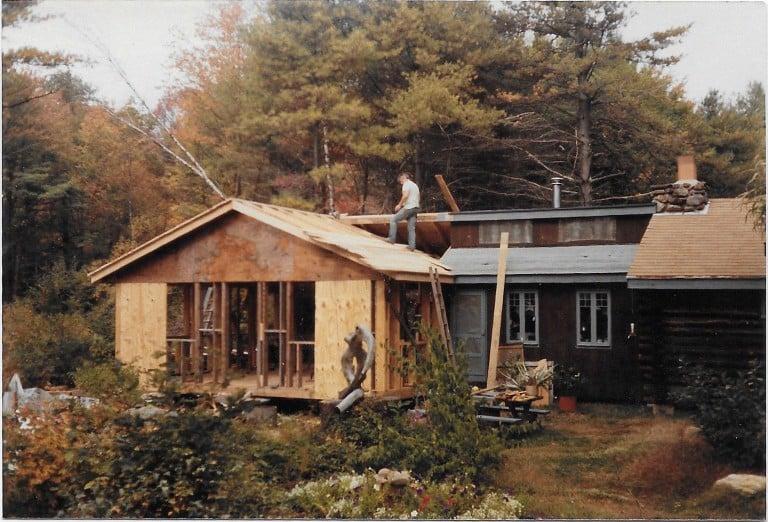
She read the Nearings’ “Living the Good Life” in 1975 when she was living in Florida. He read it at about the same time when he was living outside of Boston. The book would alter both their lives in ways they couldn’t have imagined. And it would bring them together.
Nancy and Warren Berkowitz today live in Maine not far from the house Scott and Helen Nearing built and lived in until their deaths in 1983 and 1995. They manage the Good Life Center that has as its mission the perpetuation of the Nearings’ legacy. Comprised of the Nearings’ iconic stone house, a stone-enclosed garden and some yurts on a few acres of land, the center advocates for simple and sustainable living skills, social and economic justice, organic gardening and the non-exploitation of animals. Each year, in non-Covid times, more than 1,000 people from all over the world go there for lectures, workshops, tours of the house, or to be resident stewards for a season.
The stream of seekers began when the Nearings’ book, first published in 1954, caught fire with the young people of the 1970s. With no phone at the homestead, people would make contact by letter. Others would just show up. “Helen and Scott were very accommodating,” Nancy says. “But they always kept working. If they were weeding onions, and you wanted to talk to them, you would weed the onions with them. Whatever they were doing, people would join in. A lot of the time, people would camp, staying a few days.”
Nancy was one of the seekers in 1976. She went to visit the Nearings and never left, living on their 140-acre property. In 1982, she moved in with them, taking care of Scott in his last year. Warren made his journey in 1975 after hearing the Nearings speak at a conference. He bought an old farm in a nearby town. The two would soon meet and marry.
Profitable Partnership
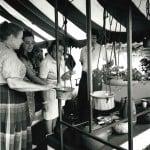
The League of NH Craftsmen had been in existence for more than 30 years when the back-to-the-land movement got under way and it became a perfect match for homesteaders who did crafts to supplement their income. The League helped homesteaders hone their skills and sell their crafts in League stores and at the annual crafts fair. In turn, the influx of crafts from homesteaders helped the League become one of the country’s foremost fine arts organizations.
Aside from being inspired by the Nearings’ book, both Nancy and Warren had long loved country life. “I grew up in the city, but went to college in a rural area,” Nancy says. “I found that’s what suits me best.” Warren grew up in the suburbs, but “always knew I’d end up in a rural area, living closer to nature.”
Coming of age in the upheaval of the 1960s, with both the anti-war movement and civil rights movement, Warren says the move to Maine represented more than a lifestyle change: “A lot of people saw living a very independent, self-sufficient life as kind of political statement. That was part of Helen and Scott’s message as well.”
The Nearings’ message has resonated in cycles through a 60-year period. “If you look at history,” Warren says, “starting in the late 1800s, there’s been a back-to-the-land movement every 40 years.” In the 1880s, he says, it was the Transcendentalists. In the 1920s, the Great Depression days. Then again in the 1960s. The Nearings were involved in three of the four movements. The movements come to an end, even if temporarily, because “life happens, people change over time,” Nancy says.
It’s been 40-some years since the last movement died out, and now there is new growth among the millennials. Warren says, “The Nearings aren’t around in today’s world, but their ideas — farm-to-table, urban gardens, organics, composting — are still having a huge influence on people.”
Yet again, Warren says, the Nearings are inspiring “people to live a better life through their words and their deeds.” It is a life that he and Nancy treasure. “No regrets, ever, ever, ever,” she says.
The Millennials
Fifteen years ago, Jeff Backer was on track to have a career as an academic. His time as a student at the University of Rhode Island had stirred an interest in agriculture and a study of wildlife, conservation biology and sustainability. That led to an interest in agroecology, which looks at agricultural systems as model socio-ecological systems. When he graduated, he worked for an ecologist at the university, with plans to continue working in academia.
But, at some point, he began to feel that life didn’t suit him. “It all just seemed too abstract to me and I decided I’d like to actually try farming for myself,” he says.
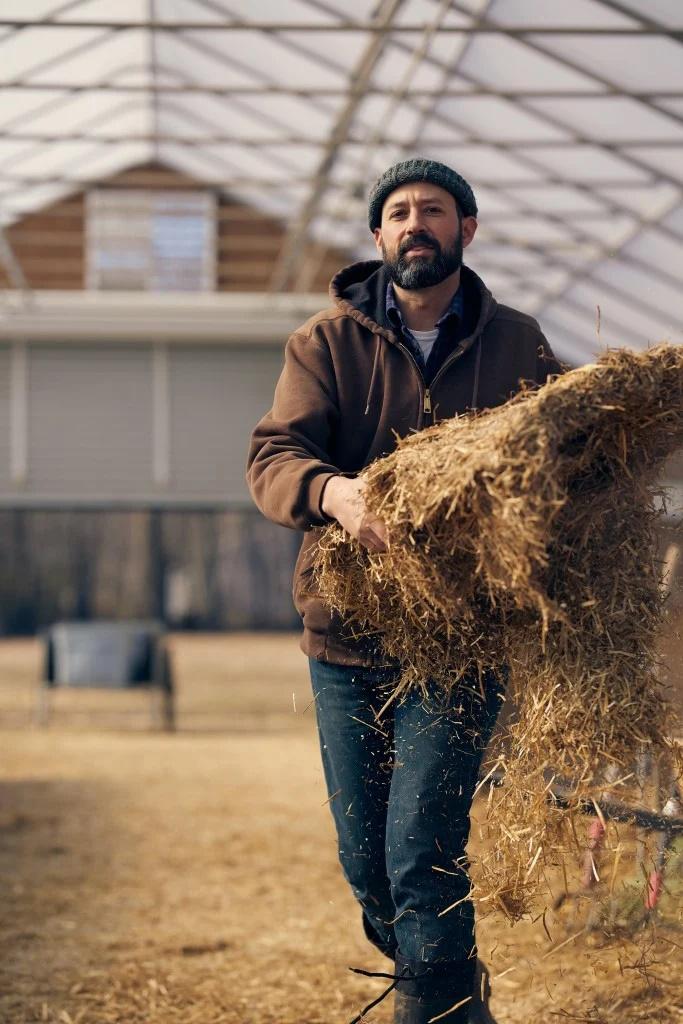
Backer would become one of today’s increasing number of educated, eco-conscious millennials who take up farming, initiating yet another 40-year cycle of leaving urban areas and going back to the land. But this cycle is different. While some will follow closely in the footsteps of past generations of back-to-the-landers, others, including Backer, won’t.
He didn’t take inspiration from Helen and Scott Nearing as his predecessors did; his inspiration came from contemporary environmental activist Wendell Berry’s philosophy of agriculture and land use. He won’t be doing the subsistence farming of earlier times, where farming provided all or most of what was required by the family without much left over that could be sold. He won’t have a “bread job” that adds some extra income. Instead, he intends to make his farm a thriving business. In fact, he already has.
“I was initially interested in self-sufficiency and homesteading-type ideas,” he says, “but that stuff didn’t survive very long when faced with the reality of running a capital-intensive business in the real world. There is still some romantic appeal to moving to the middle of nowhere and fending for yourself, but ultimately you have to pay the mortgage or the rent somehow.”
That “somehow” for the entrepreneurial Backer was 200 acres of land in Northwood called Short Creek Farm, which he and his friend Dave Viola began to farm in 2014. They did it, he says, “to address a perceived lack of high-quality, value-added products made by small farms for local markets.” From their pastured pork, grass-fed beef and organic vegetables, they provide artisanal sausages, salami, bacon and cuts of pork as well as fermented products like kimchi to local restaurants and to online buyers with a home delivery service.
Making it as a millennial farmer is facilitated by technological advances that include the web-based ordering platform and the electric fences with solar-powered chargers that are used at Short Creek Farm. Success is also facilitated by a strong market for “real” food — seasonal, locally sourced and healthfully grown. That strong market, at least in part, a legacy of earlier back-to-the-landers’ quest to change how we eat.
In today’s environment, Backer says it’s possible to be both an entrepreneur and a good steward of the land. “It means using the land carefully and thoughtfully,” he says. “It means protecting the more wild places on the farm from undue disturbance. But it also means making the best use of the productive land and increasing that productivity over time by using good grazing and soil management practices. It means protecting the natural resources of the farm and surrounding land, and specifically the agricultural resources of any land we use, for those that farm here after us.”
Ask him whether he sees himself still farming far into the future, and he says, “Sure hope so. It’s really a matter of making what we’re doing into a long-term, sustainable, profitable business.”
A Shift in the Winds (Again)
The back-to-the-landers of the ’60s and ’70s watched as their movement gradually became faded and forgotten. By the time the ’80s began, the consumer culture had regained its dominance.
For Jean Stimmell, that shift was consequential: “Just imagine, if our values had triumphed over materialism and corporate greed, there would be no climate crisis today — and possibly no pandemic.”
If, indeed, there is a 40-year cycle for back-to-the-land movements (see main story), it is time again. And there’s evidence it’s happening with millennials, who are facing not only climate change and a pandemic but the same kind of social and political upheaval that their grandparents did. And the same consumer culture.
“The prevailing cultural winds in this country have started to shift from mass-produced, mindless conformity to a yearning for a return to a sustainable, mindful way of life,” Stimmell says. He points to the demand for “fresh, real food, grown locally,” farmers markets and co-ops of all kinds.
Warren Berkowitz agrees. “It’s happening now with the rise of small organic farming,” he says. He meets the young people who are going back to the land — or living by the ethos of the movement — at the Good Life Center.
Even though the center is “off the beaten path, in the middle of nowhere,” Berkowitz says “more and more” young people visit each year, at least in non-Covid times. For many, their pilgrimage to the center was inspired by the books written by the Nearings. “They’re still having a huge influence on people,” he says.
For the new generation, instead using the Whole Earth Catalog for information about homesteading, there is the internet. Instead of wood heat, there are solar panels. Such things make it somewhat easier than it was for their predecessors, but still hard work. Add to that, land is no longer cheap. Yet they persist.
Stimmell says, “I am proud of my generation for doing our small part to make this happen and even happier that I have managed to live long enough to see that cultural entropy is not a straight, downhill slide but circular.”
He adds, though, that there is an unusual urgency to the new back-to-the-land movement: “Its ethical underpinning is essential now for the survival of the planet.”
